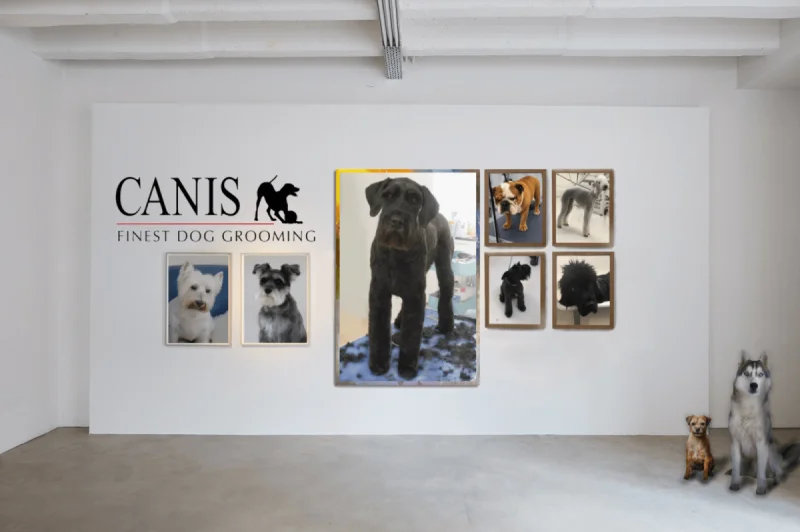Animal Welfare Act 2006

The Animal Welfare Act 2006 is a fairly extensive piece of legislation designed to improve and ensure good standards of care and to prevent abuse of animals - section 9 is key. This piece of legislation is important for both pet owners and dog groomers, or any individual interfacing with domesticated or captive animals. Out of this piece of legislation comes what are known as the 5 Animal Welfare Needs, and these are:
The 5 Welfare Needs
Every pet owner must provide for the following needs of their pets:
- Health – Protection from pain, injury, suffering and disease and treated if they become ill or injured.
- Behaviour – the ability to behave naturally for their species eg. Play, run, dig, jump, fly etc.
- Companionship – to be housed with, or apart from, other animals as appropriate for the species. i.e. company of their own kind for sociable species like rabbits or guinea pigs, or to be housed alone for solitary species like hamsters.
- Diet – a suitable diet. This can include feeding appropriately for the pet’s life stage and feeding a suitable amount to prevent obesity or malnourishment, as well as access to fresh clean water.
- Environment – a suitable environment. This should include the right type of home with a comfortable place to rest and hide as well as space to exercise and explore.
As dog groomers, we try very hard to meet the welfare needs of the dogs that owners temporarily transfer into our care, and these are the ways in which we try to meet the standards expected in law:
Health - matted coats can cause significant physical discomfort, and can also mask skin health problems. We will not attempt extensive dematting procedures on any dog, as this can cause pain and mental distress; we will inform you of any problem, but we aware that we will remove a matted coat in the most humane manner that is possible for us to do - a qualified groomer will use a short blade, and very carefully shave the coat from the skin. It is unlikely that any aesthetic trimming will be possible in this instance. Be aware, that we do not accept responsibility for injury where we are attempting to alleviate a problem. At the outset of a groom, we will enquire about the health of your dog to try to ensure that we don't do anything or use a product that might exacerbate an existing problem. The products we use within the salon are specifically for dogs. During the course of each groom, we are on the lookout for any signs of abnormality in your dog's condition or health, and we will draw these to your attention enabling you to follow up any problem with your dog's veterinary surgeon.
Behaviour - we will observe your dog's behaviour to try to ensure that we reassure him or her at each stage of the groom, to reduce fear or anxiety. We reward dogs verbally, and often we give treats to try to establish good manners in the grooming salon as this makes the session more enjoyable for the dog and also for us. We want your dog to like us and to trust us. If your dog is allergic to some food, then please tell us so that we can give the right treats. If you know of any reason why a dog might not like a particular procedure, then it is really important that you tell us, as we can then work in a different way to try to ensure that your dog is both happy and safe, and that we are also protected. We are aware that some groomers claim to work force-free, and in practice what this means is that they do not use restraint equipment whilst the dog is on the table. We use restraint equipment to ensure that the dog does not fall or jump from the table, that it also stands reasonably still whilst we are working with sharp tools to cut hair; these are sensible risk control measures and are practiced by the majority of professional dog groomers.
Companionship - if you bring in more than one dog, then please tell us if it is safe for them to wait in the same crate, as sometimes dogs don't like this. If they need to be separate, we will ensure that they are placed at the same height so as not to upset any hierarchy that they have established. For some dogs they do not like the presence of other dogs, and if we know in advance, we will make sure that they are placed so they don't feel anxious or defensive.
Diet - we will weigh your dog from time to time to help you track their body condition. Frequently we see obese dogs, and weighing and recording the details is usually very helpful to owners in managing portion sizes for their dog. Occasionally, we see dogs that are underweight, and will let owners know if we feel this is the case. Weight management is an area that your veterinary surgeon will be able to help with once they have ruled out any underlying causes. To help dogs learn good manners and to feel more relaxed in the salon, we do use treats, but if this is a problem, then do let us know. Favourite treats are ham, or cheddar cheese. We offer water whilst the dog is in the salon, and we also provide a toiletting opportunity usually on arrival, and usually before bathing.
Environment - we groom many dogs each day, and in order to ensure their safety, we use crates where they can rest quietly on arrival, between stages, or whilst awaiting collection which you should do at the appointed time. We do not work cage-free, as there is always the possibility that one of the canine clients is not good with other dogs. We also have people people coming in and out of the building, and whilst we try to keep doors and gates shut, there is always the risk that a dog might escape. We are aware that some groomers work cage-free, but usually this means the dogs are tied up, kept in a pen which is virtually the same as a crate except it doesn't have a lid, or the dogs are wandering around in the grooming area. We feel that the use of crates is the best way to manage risks and to keep your dog safe in our particular salon.


